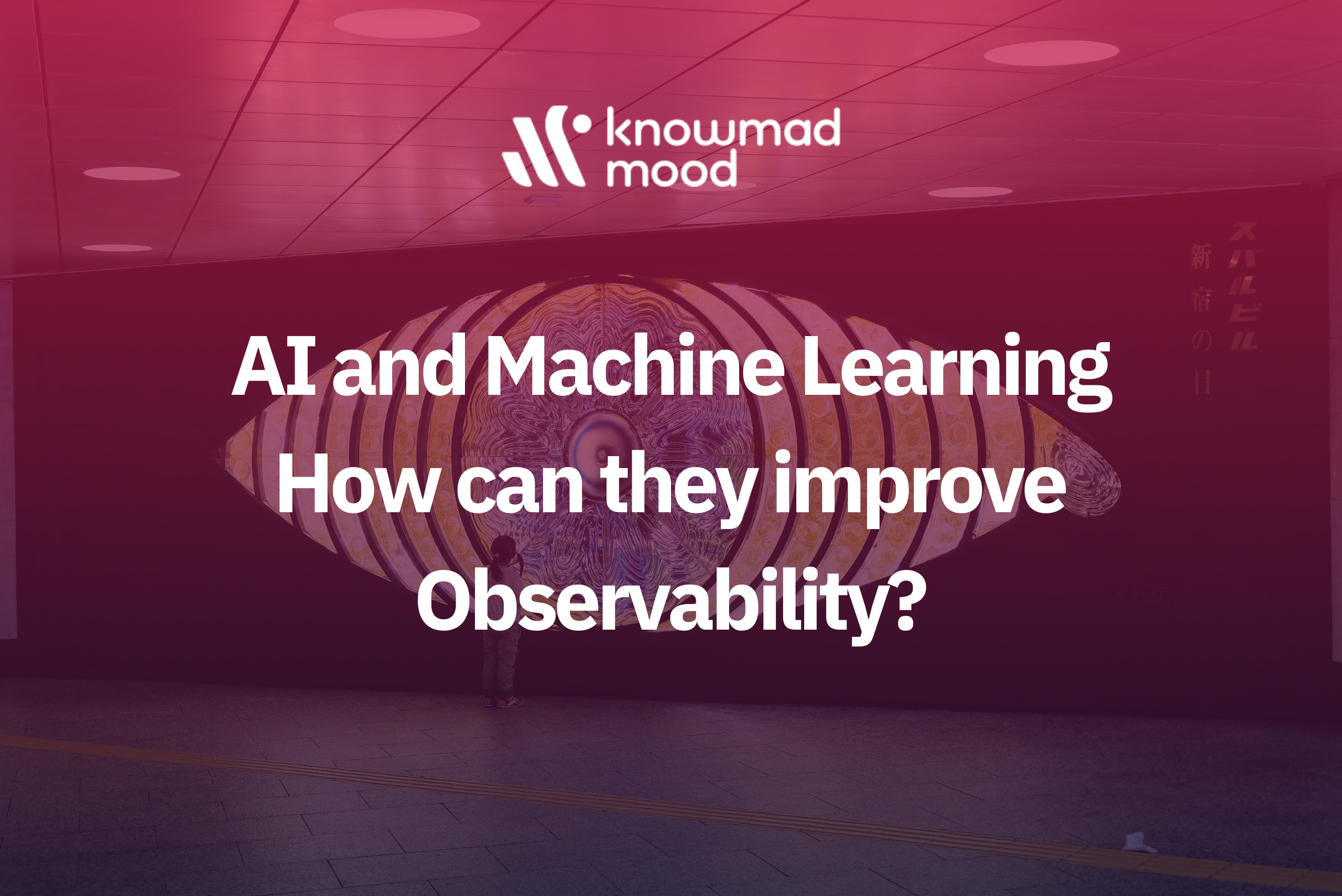
Artificial Intelligence and Machine Learning: How can they improve Observability?
In a business culture increasingly focused on data and its management, observability is becoming critical for companies, as it allows them to understand what is happening within platforms or applications and to detect and resolve problems, while keeping systems and applications more efficient and reliable. According to a Riverbed study led by PAC, 43% of companies plan to implement observability solutions by 2024.
Observability is also implementing new technologies such as Artificial Intelligence (AI) and Machine Learning allowing them to automate and optimize workflows. There are many ways in which these technologies improve observability, according to knowmad mood, a leading technology consultancy in digital transformation:
Proactive and preventive problem detection.
AI and Machine Learning have the ability to analyze patterns, trends and anomalies, such as behavioral changes in applications or infrastructure, anticipating problems that threaten performance. In addition, it enables the generation of early warnings, enabling operations teams to address problems long before they could become major incidents. Furthermore, this early and proactive detection improves system availability and user experience by minimizing unplanned downtime. This enables a company to detect and diagnose problems in real time along with their potential resolution, allowing IT teams to respond quickly and avoid disruptions to their systems or processes.
Improved data collection and intelligent data presentation
The incorporation of Artificial Intelligence and Machine Learning into observability solutions is capable of revolutionizing how organizations obtain data, but also how it is presented. These technologies enable the automation of data collection from multiple sources at once, such as infrastructure metrics, application logs or events. Algorithms can then identify and retrieve crucial data amidst large volumes of data for observability, while reducing potential noise or the amount of less important data. All in all, these technologies can customize dashboards and generate executive summaries based on roles and users’ own needs, improving their presentation.
Automated optimization
The observability of a system, in itself, is aimed at optimizing its processes to improve its effectiveness: speed, efficiency, scalability or security.Machine learning and Artificial Intelligence are capable of automating the allocation and adjustment of resources for the system, making changes to the configuration or reorganizing workloads, as well as offering recommendations and executing actions. All this in order to optimize the efficiency of the system, reacting dynamically to respond to changing environmental conditions, and even reduce costs.
Advanced analysis and execution of solutions and continuous learning
Artificial Intelligence and Machine Learning, through their ability to analyze data, can identify patterns, trends and anomalies, such as behavioral changes in applications or infrastructure, anticipating problems that threaten performance. All in all, machine learning is based on historical and real-time data, at all times and continuously adapting to conditions, reducing the impact of problems as they arise.
“As technology continues to advance, at a frenetic pace, the integration of technologies such as AI and machine learning into observability is becoming key to making any system as optimizable as possible. The response if a performance problem arises will be faster and more accurate from the time it is identified to the time it finds its root cause, without additional testing or coding. The challenge lies in knowing where to apply this machine learning to make it as useful as possible, since you have to know how to prepare the data so that it can work its magic. This is why companies must have an experienced partner like knowmad mood to guide them through this process,” says Gustavo Sandoval, Head of AI, IoT & Smart Industry at knowmad mood

